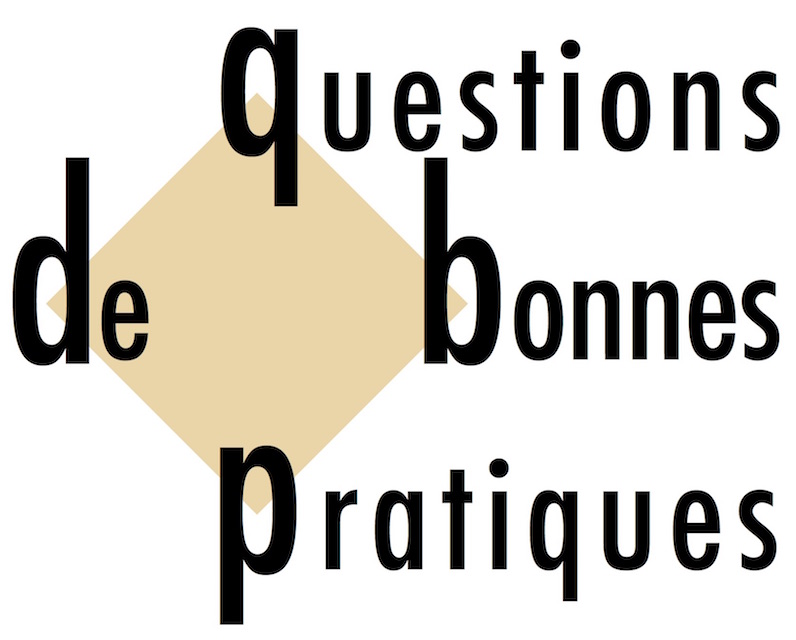Lien vers la table des matières de la bibliographie thématique, composée de documents réunis par un Groupe de travail constitué dans la perspective de préciser les spécificités de l'approche clinique de l'Antenne 110 par rapport aux "Evidence-Based Practices" : CLIQUER ICI.
Akmanoglu, N., & Tekin-Iftar, E. (2011). Teaching children with autism how to respond to the lures of strangers. Autism: The International Journal of Research and Practice, 15(2), 205-222. http://dx.doi.org/10.1177/1362361309352180
Allen, K. D., Wallace, D. P., Greene, D. J., Bowen, S. L., & Burke, R. V. (2010). Community-based vocational instruction using videotaped modeling for young adults with autism spectrum disorders performing in air-inflated mascots. Focus on Autism and Other Developmental Disabilities, 25(3), 186-192. http://dx.doi.org/10.1177/1088357610377318
Apple, A. L., Billingsley, F., Schwartz, I. S., & Carr, E. G. (2005). Effects of video modeling alone and with self-management on compliment-giving behaviors of children with high-functioning ASD. Journal of Positive Behavior Interventions, 7(1), 33-46. http://dx.doi.org/10.1177/10983007050070010401
Bellini, S., Jennifer, A., & Hopf, A. (2007). Increasing social engagement in young children with autism spectrum disorders using video self-modeling. School Psychology Review, 36(1), 80-90.
Boyd, B. A., McDonough, S. G., & Bodfish, J. W. (2012). Evidence-based behavioral interventions for repetitive behaviors in autism. Journal of Autism and Developmental Disorders, 42(6), 1236-1248. http://dx.doi.org/10.1007/s10803-011-1284-z
Buggey, T., Hoomes, G., Sherberger, M. E., & Williams, S. (2011). Facilitating social initiations of preschoolers with autism spectrum disorders using video self-modeling. Focus on Autism and Other Developmental Disabilities, 26(1), 25-36.
Buggey, T., Toombs, K., Gardener, P., & Cervetti, M. (1999). Training responding behaviors in students with autism using videotaped self-modeling. Journal of Positive Behavior Interventions, 1(4), 205-214. http://dx.doi.org/10.1177/109830079900100403
Cannella-Malone, H. I., Fleming, C., Chung, Y. -C., Wheeler, G. M., Basbagill, A. R., & Singh, A. H. (2011). Teaching daily living skills to seven individuals with severe intellectual disabilities: A comparison of video prompting to video modeling. Journal of Positive Behavior Interventions, 13(3), 144-153. http://dx.doi.org/10.1177/1098300710366593
Cardon, T. (2012). Teaching caregivers to implement video modeling imitation training via ipad for their children with autism. Research in Autism Spectrum Disorders, 6(4), 1389-1400. http://dx.doi.org/http://dx.doi.org/10.1016/j.rasd.2012.06.002
Cardon, T., & Wilcox, M. J. (2011). Promoting imitation in young children with autism: A comparison of reciprocal imitation training and video modeling. J Autism Dev Disord, 41(5), 654-666. http://dx.doi.org/10.1007/s10803-010-1086-8
Charlop, M. H., Dennis, B., Carpenter, M. H., & Greenberg, A. L. (2010). Teaching socially expressive behaviors to children with autism through video modeling. Education and Treatment of Children, 33(3), 371-393.
Charlop-Christy, M. H., & Daneshvar, S. (2003). Using video modeling to teach perspective taking to children with autism. Journal of Positive Behavior Interventions, 5(1), 12-21.
Charlop-Christy, M. H., Le, L., & Freeman, K. A. (2000). A comparison of video modeling with in vivo modeling for teaching children with autism. J Autism Dev Disord, 30(6), 537-552.
Cihak, D., Fahrenkrog, C., Ayres, K. M., & Smith, C. (2010). The use of video modeling via a video ipod and a system of least prompts to improve transitional behaviors for students with autism spectrum disorders in the general education classroom. Journal of Positive Behavior Interventions, 12(2), 103-115. http://dx.doi.org/10.1177/1098300709332346
Cihak, D. F. (2011). Comparing pictorial and video modeling activity schedules during transitions for students with autism spectrum disorders. Research in Autism Spectrum Disorders, 5(1), 433-441. http://dx.doi.org/10.1016/j.rasd.2010.06.006
Coyle, C., & Cole, P. (2004). A videotaped self-modelling and self-monitoring treatment program to decrease off-task behaviour in children with autism. Journal of Intellectual and Developmental Disability, 29(1), 3-16.
D'Ateno, P., Mangiapanello, K., & Taylor, B. A. (2003). Using video modeling to teach complex play sequences to a preschooler with autism. Journal of Positive Behavior Interventions, 5(1), 5-11. http://dx.doi.org/10.1177/10983007030050010801
Geiger, K. B., Leblanc, L. A., Dillon, C. M., & Bates, S. L. (2010). An evaluation of preference for video and in vivo modeling. Journal of Applied Behavior Analysis, 43(2), 279-83. http://dx.doi.org/10.1901/jaba.2010.43-279
Goodson, J., Sigafoos, J., O’Reilly, M., Cannella, H., & Lancioni, G. E. (2007). Evaluation of a video-based error correction procedure for teaching a domestic skill to individuals with developmental disabilities. Res Dev Disabil, 28(5), 458-467. http://dx.doi.org/10.1016/j.ridd.2006.06.002
Haring, T. G., Breen, C. G., Weiner, J., Kennedy, C. H., & Bednersh, F. (1995). Using videotape modeling to facilitate generalized purchasing skills. Journal of Behavioral Education, 5(1), 29-53.
Hine, J. F., & Wolery, M. (2006). Using point-of-view video modeling to teach play to preschoolers with autism. Topics in Early Childhood Special Education, 26(2), 83-93.
Kleeberger, V., & Mirenda, P. (2010). Teaching generalized imitation skills to a preschooler with autism using video modeling. Journal of Positive Behavior Interventions, 12(2), 116-127.
Kroeger, K. A., Schultz, J. R., & Newsom, C. (2007). A comparison of two group-delivered social skills programs for young children with autism. J Autism Dev Disord, 37(5), 808-817. http://dx.doi.org/10.1007/s10803-006-0207-x
Landa, R. J., Holman, K. C., O'Neill, A. H., & Stuart, E. A. (2011). Intervention targeting development of socially synchronous engagement in toddlers with autism spectrum disorder: A randomized controlled trial. Journal of Child Psychology and Psychiatry, 52(1), 13-21. http://dx.doi.org/10.1111/j.1469-7610.2010.02288.x
LeBlanc, L. A., Coates, A. M., Daneshvar, S., Charlop-Christy, M. H., Morris, C., & Lancaster, B. M. (2003). Using video modeling and reinforcement to teach perspective-taking skills to children with autism. Journal of Applied Behavior Analysis, 36(2), 253-257. http://dx.doi.org/10.1901/jaba.2003.36-253
Maione, L., & Mirenda, P. (2006). Effects of video modeling and video feedback on peer-directed social language skills of a child with autism. Journal of Positive Behavior Interventions, 8(2), 106-118. http://dx.doi.org/10.1177/10983007060080020201
Marcus, A., & Wilder, D. A. (2009). A comparison of peer video modeling and self video modeling to teach textual responses in children with autism. Journal of Applied Behavior Analysis, 42(2), 335-341. http://dx.doi.org/10.1901/jaba.2009.42-335
Marzullo-Kerth, D., Reeve, S. A., Reeve, K. F., & Townsend, D. B. (2011). Using multiple-exemplar training to teach a generalized repertoire of sharing to children with autism. Journal of Applied Behavior Analysis, 44(2), 279-294. http://dx.doi.org/10.1901/jaba.2011.44-279
Matson, J. L., Box, M. L., & Francis, K. L. (1992). Treatment of elective mute behavior in two developmentally delayed children using modeling and contingency management. Journal of Behavior Therapy and Experimental Psychiatry, 23(3), 221-229.
Nelson-Head, C., Adams Hill, D., & Flores, M. (2012). Case study on the implementation of a video story-based intervention with self-modeling treatment package to reduce stereotypical spitting behavior in a young girl with autism. Journal of Special Education and Rehabilitation, 13(3-4), 85-98. http://dx.doi.org/10.2478/v10215-011-0027-1
Nikopoulos, C. K., & Keenan, M. (2003). Promoting social initiation in children with autism using video modeling. Behavioral Interventions, 18(2), 87-108. http://dx.doi.org/10.1002/bin.129
Nikopoulos, C. K., & Keenan, M. (2004). Effects of video modeling on social initiations by children with autism. Journal of Applied Behavior Analysis, 37(1), 93-96. http://dx.doi.org/10.1901/jaba.2004.37-93
Nikopoulos, C. K., & Keenan, M. (2007). Using video modeling to teach complex social sequences to children with autism. J Autism Dev Disord, 37(4), 678-693. http://dx.doi.org/10.1007/s10803-006-0195-x
Nikopoulos, C. K., Canavan, C., & Nikopoulou-Smyrni, P. (2009). Generalized effects of video modeling on establishing instructional stimulus control in children with autism results of a preliminary study. Journal of Positive Behavior Interventions, 11(4), 198-207. http://dx.doi.org/10.1177/1098300708325263
Plavnick, J. B., & Ferreri, S. J. (2011). Establishing verbal repertoires in children with autism using function-based video modeling. Journal of Applied Behavior Analysis, 44(4), 747-766. http://dx.doi.org/10.1901/jaba.2011.44-747
Rayner, C. (2011). Teaching students with autism to tie a shoelace knot using video prompting and backward chaining. Developmental Neurorehabilitation, 14(6), 339-347. http://dx.doi.org/10.3109/17518423.2011.606508
Reeve, S. A., Reeve, K. F., Buffington Townsend, D., & Poulson, C. L. (2007). Establishing a generalized repertoire of helping behavior in children with autism. Journal of Applied Behavior Analysis, 40(1), 123-136. http://dx.doi.org/10.1901/jaba.2007.11-05
Rigsby-Eldredge, M., & McLaughlin, T. F. (1992). The effects of modeling and praise on self-initiated behavior across settings with two adolescent students with autism. Journal of Developmental and Physical Disabilities, 4(3), 205-218. http://dx.doi.org/10.1007/BF01046965
Schrandt, J. A., Townsend, D. B., & Poulson, C. L. (2009). Teaching empathy skills to children with autism. Journal of Applied Behavior Analysis, 42(1), 17-32. http://dx.doi.org/10.1901/jaba.2009.42-17
Sherer, M., Pierce, K. L., Paredes, S., Kisacky, K. L., Ingersoll, B., & Schreibman, L. (2001). Enhancing conversation skills in children with autism via video technology. Which is better, "self" or "other" as a model? Behav Modif, 25(1), 140-158.
Stahmer, A. C., Ingersoll, B., & Carter, C. (2003). Behavioral approaches to promoting play. Autism, 7(4), 401-413.
Taylor, B. A., Levin, L., & Jasper, S. (1999). Increasing play-related statements in children with autism toward their siblings: Effects of video modeling. Journal of Developmental and Physical Disabilities, 11(3), 253-264. http://dx.doi.org/10.1023/A:1021800716392
Wert, B. Y., & Neisworth, J. T. (2003). Effects of video self-modeling on spontaneous requesting in children with autism. Journal of Positive Behavior Interventions, 5(1), 30-34. http://dx.doi.org/10.1177/10983007030050010501
Wolfe, K., Slocum, T. A., & Kunnavatana, S. S. (2014). Promoting behavioral variability in individuals with autism spectrum disorders A literature review. Focus on Autism and Other Developmental Disabilities, 1-11. http://dx.doi.org/10.1177/1088357614525661



